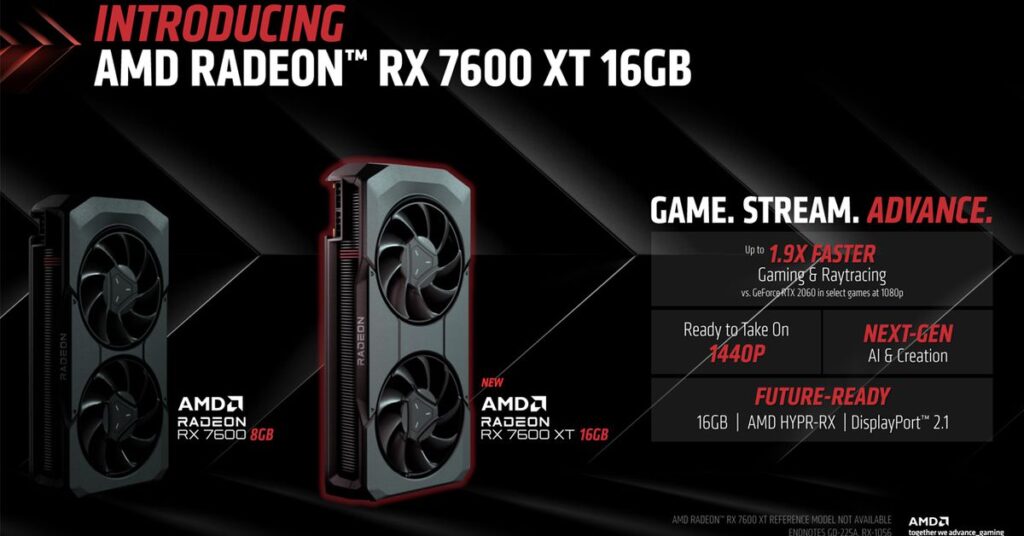AMD Radeon RX 7600 XT vs RX 7600: What’s the difference?

The AMD Radeon RX 7600 XT is official, with AMD launching the new graphics card during CES 2024 week.
Those of you familiar with AMD’s latest lineup of graphics cards may be wondering what separates this new graphics card from the existing AMD Radeon RX 7600.
We’ve created this comparison guide to highlight the key differences between the AMD RX 7600 and the new AMD Radeon RX 7600 XT. Keep reading on for the full breakdown.
AMD Radeon RX 7600 XT doubles the video memory
One of the biggest upgrades for the AMD Radeon RX 7600 XT can be found with the video memory. The new graphics card flaunts 16GB of GDDR6 video memory, which is twice the amount as the 8GB found with the AMD Radeon RX 7600.
A high video memory is very important for playing high-end games, as it determines how much data can be stored and accessed mid-game for a more efficient performance. Having lower video memory than a game requires can result in frame rate drops and a reduction in graphics quality.
With that considered, the 16GB video memory of the RX 7600 XT is a huge upgrade on the standard RX 7600 model.
AMD Radeon RX 7600 XT benefits from higher clock speeds
The clock speed is incredibly important for a graphics card, as it represents the speed that a GPU’s core can run at in order to process lots of data as quickly as possible.
With that in mind, it’s great to see AMD providing an increased boost clock speed, rising from the 2.66GHz speed of the RX 7600 to 2.76GHz for the RX 7600 XT model. This is a significant improvement, likely resulting in a noticeable performance difference.
AMD also provides a game clock speed figure, which comes in at 2.25GHz for the RX 7600 XT, and 2.47GHz for the RX 7600 XT. This emphasises that the XT version should see a better performance for gaming.
In fact, AMD is confident enough in the performance to suggest the XT model is capable of a strong 1440p performance, while the Radeon RX 7600 instead mostly targets a 1080p performance.

AMD Radeon RX 7600 XT has higher power consumption
With the AMD Radeon RX 7600 XT offering a greater performance than the RX 7600, it shouldn’t be surprising that it also uses up more power. AMD says the new graphics card has a TBP (typical board power) of at least 190W, depending on which model you buy.
Meanwhile, the standard AMD Radeon RX 7600 only has a TBP of 165W, which means it requires less power to run. This not only means you have more headroom for a cheaper PSU, but also suggests your PC will use up more power which is great news for those conscious about the environment.
That said, there’s only a 25W difference in terms of TBP between the cards. It’s impressive that AMD has been able to enhance the performance while minimising power consumption.
AMD Radeon RX 7600 XT is slightly more expensive
The least surprising aspect about the AMD Radeon RX 7600 XT is that it’s more expensive than the standard Radeon RX 7600 card – more performance almost always means a higher price. However, you may be surprised to learn how cheap the new graphics card is.
The AMD Radeon RX 7600 XT has been officially priced at just $329, although this cost will vary depending on which model you purchase. Interestingly, this is the exact same price that the AMD Radeon RX 7600 was priced at during the initial launch.
As a consequence, AMD has decided to drop the price of the standard AMD Radeon RX 7600, as it’s now available for as little as $269. If you’re on the hunt for a GPU at a different price point, check out our Best Graphics Card list for more options.








